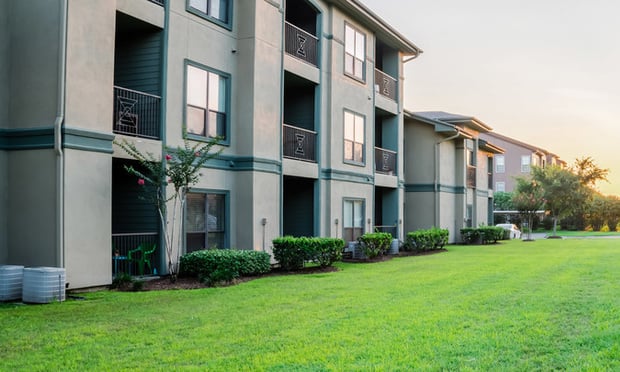Nearly every development these days in Dallas/Fort Worth, like virtually every other urban and suburban pocket of America, is being built, backfilled and redeveloped with mixed uses. Realistically, some projects will be far more successful than others and some will outright fail.
"It's programming the space to maximize the value of the real estate. It's not just building sticks and bricks, it has to be tailored to where you are," emphasizes Robert Voelker, shareholder of Munsch Hardt Kopf & Harr in Dallas and recognized expert in the mixed-use arena.
Another acknowledged industry expert, Galina Tahchieva, partner of Miami-based Duany Plater Zyberk & Co. and its director of town planning, confidently says mixed-use development isn't merely a fad that will fade with time. "It's all over the place, not just the US. Mixed-use development is the bare minimum requirement today," she tells GlobeSt.com. "This is just a baby step to make up for past mistakes. The smaller communities are absolutely right to require it."
But, Tahchieva and Voelker agree that the concept, as it's playing out today in the US, needs to undergo some changes. Whether urban or suburban, a project's success hinges on its flexibility, concentration, affordability and desirability. If it's done smartly, a CBD can attain 24/7 status, which has been proven in foreign cities, and a suburb can contain sprawl by adding mixed-use, stacked space tailored toward its demographics.
[IMGCAP(2)]Voelker says suburban officials might be reluctant, but they need to consider apartments, with an affordable component, as a viable option for condos in town centers and retail that's not always high-end. Apartments lessen displacement of needed workers and are magnets for a 20-something and over crowd more intent on forging careers than setting down permanent roots in houses or condos. As for the retail, it needs to match the pocketbooks of the local population.
"In my opinion, there are too many town centers going on in Texas. It's the new fad. Some are going to fail, but more are going to be the new hotspots in town," Voelker says. "If you don't change your model, it's going to fail because the retail is going to fail. And if you want to solve some problems that mixed-use is meant to address, mixed-income is something you really need to address."
Ironically, Texas is a laggard in mixed-income thinking because existing laws take away tax credit points for affordable housing projects, according to Voelker. "Until we rethink this whole process in Dallas and Texas, it's going to be incredibly hard to finance or develop mixed-income properties," he says. "You will continue to end up with luxury properties that only the high-income can afford and it will displace more people."
Voelker says condos, particularly luxury branded ones, are exceedingly popular because developers can tack a 15% to 40% premium onto the price. "It allows you to sell at such a premium that it can wipe out debt and equity components so developers end up with huge profits," he explains.
High-end, mixed-use development with an affordable component has been done elsewhere and profitably. Voelker points to the W Hollywood Hotel & Condominiums, situated at the fabled Hollywood and Vine, as a prime example. The Los Angeles Community Redevelopment Authority mandated 15% of all apartments and condos to be affordable in the project. Voelker says the developer shifted the full burden to just the apartment component, upped the percentage to 20% and the project hit its goal to become a catalyst for a once-seedy strip. He says there now are more than 3,000 new residential units coming to fruition.
"They didn't want to displace workers, who wanted to still be able to live where they work. This is a perfect model," Voelker says.
Tahchieva says the irony of the mixed-use kingdom is inner cities were once the poorest neighborhoods "and all of a sudden they have the highest price tag" through redevelopment. She, like others in the industry, is concerned city officials aren't always using best practices to keep markets affordable and subsequently sustainable. "We have tools or practices that can be designed with mixed uses, mixed neighborhoods, mixed everything," she says. "We have to learn how to do buildings that are simple, but with longevity, buildings that are durable and flexible enough to adapt or change so they will be sustainable for a long time."
Tahchieva says "Main Street" sustainability is attainable through good management and good design. "The management of a mall is an example of perfect management," she says, explaining all services are available and within walking distance. "This is what our Main Streets need to learn. All these tools are at their disposable. What we can do as planners is to provide the physical vessel for communities."
Mixed-use development won't replace single-use projects. "They will co-exist," Tahchieva says. "In a pure world, things have their place. What we've been striving for is to create some other choices."
Mixed-use development also isn't the Holy Grail. "We will not be able to retrofit every little shopping center at every exit on a freeway," Tahchieva asserts. "The way to identify where retrofitting can happen is concentration, like a mall or an office park. The places of concentration can be counterbalanced in an effective way."
Voelker says densification and all that goes with it, including mass transit, become increasingly important coping tools for fast-growing populations like Texas. "The densification of the US is here to stay. We are going to see mixed-use evolve and get more sophisticated," he says. "Texas is so single-family home oriented. But over time, our thought process is going to evolve."
Among the issues confronting mixed-use developers are the contracts among partners, investors and municipalities. Voelker says the best strategy is to "condominiumize" all project components by creating a master condominium association and add a sub-group dedicated to homeowners. The residential association will be a member of the master association. He says condo owners won't be double paying, but will be paying their fair share for all shared services.
Like all trends, there are red flags for certain issues. Voelker says voting rights in master condominium agreements have become a hot-button issue in mixed-use projects. Yet, they're being more frequently used to facilitate resale down the road and secure construction financing because the projects often than not have one or more developers and sometimes more than one equity backer.
Voelker will be speaking on mixed-use hotel projects at Penn State University's School of Hospitality Management's third international conference on services management May-10 at Penn Stater Conference Hotel in University Park, PA. Andres Duany and Elizabeth Plater-Zyberk, renowned planners with a project on the drawing board in Windcrest, TX and Tahchieva's partners, will be part of the all-star lineup for the National Conference on New Urbanism, slated for April 3-6 at the Austin Convention Center in Austin, TX.
Want to continue reading?
Become a Free ALM Digital Reader.
Once you are an ALM Digital Member, you’ll receive:
- Breaking commercial real estate news and analysis, on-site and via our newsletters and custom alerts
- Educational webcasts, white papers, and ebooks from industry thought leaders
- Critical coverage of the property casualty insurance and financial advisory markets on our other ALM sites, PropertyCasualty360 and ThinkAdvisor
Already have an account? Sign In Now
*May exclude premium content© 2024 ALM Global, LLC, All Rights Reserved. Request academic re-use from www.copyright.com. All other uses, submit a request to [email protected]. For more information visit Asset & Logo Licensing.








